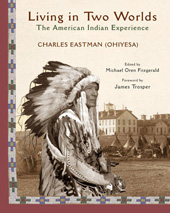| |
You can follow
Wisdom Tales Press on:
 
|
| Children |
|
|
|
|
|
| > Teens |
|
|
|
|
| Resources |
|
|
Wisdom Tales Newsletter Our periodic e-newsletters keep you up to date with our new books, special offers, etc. It is free, and easy to subscribe (or to unsubscribe): just click on the secure button below.
Recent Videos on YouTube:
We have a playlist on the World Wisdom YouTube channel, featuring Crow tribe Sun Dance Chief and Medicine Man Thomas Yellowtail.
Click here to view and play any or all of the videos with Thomas Yellowtail, on the YouTube site.
Recent Honors
NYC Big Book Awards:
• Two Winner awards for:
The Clever Wife: A Kyrgyz Folktale
• Two Distinguished Favorite Awards for:
Little Bear: An Inuit Folktale
• Two Winner Awards for:
Zen and the Ten Oxherding Pictures
Wisdom Tales
is a member of:

|
| |

Sharing the wisdom and beauty of cultures from around the world
|
|

Available Now
at your local bookseller or your favorite online book retailer. |
|
| View Sample Pages |
Click on one of the
pdf
icons below to see
sample pages in pdf
format in a new tab
or window |
 pages 52-53 pages 52-53 |
 pages 88-89 pages 88-89 |
 |
|
|
Living in Two Worlds:
The American Indian Experience |
|
American Indian |
11–12 / Lexile measure: 1210L) |
Paperback |
8" × 10" / 224 pages |
978-1-933316-76-5 |
Available now |
$24.95 |
|
|
Living in Two Worlds is noted early Native American writer Charles Eastman’s (Ohiyesa) compelling story of embracing a life of traditional cultural ideals of his nomadic ancestors while living in the modern industrialized world. This book, edited by award-winning author Michael Fitzgerald, includes selections from five of Eastman’s most important books, but also nine interviews with contemporary Native leaders from diverse tribes, thus bringing Eastman’s narrative up to our current day. Filled with first-hand accounts, personal stories, interviews, timelines, maps, and over 275 stunning vintage photographs and paintings, this beautifully illustrated book presents a vivid account of the American Indian experience during the last four centuries.
|
|
|
- Winner in the “Multicultural Non-Fiction” category of The USA "Best Books 2011" Awards, sponsored by USA Book News
- Winner of the ForeWord Book of the Year Gold Medal in the “Social Science” category; finalist in the “History” category
- Winner of the Benjamin Franklin Gold Award for “Multicultural”
- 3 Gold Midwest Book Awards for: “Culture”, “Interior Layout”, and “Color Cover”
- 2 Silver Midwest Book Awards for: “History” and “Total Book Design”
- Finalist in two categoris of The USA "Best Books 2011" Awards, sponsored by USA Book News (“Best Interior Design” and “History: United States”)
|
|
|
“Living in Two Worlds: The American Indian Experience is a balanced edition focused on bicultural experiences of American Indians, containing extended excerpts from a number of Eastman’s 11 published books in addition to writings of other Indian voices, famous American Indian leaders up to the present day who are in the “Contemporary Indian Voices” chapter of Living in Two Worlds. The first four chapters deal with views of American Indian philosophy through examination of the life and writings of Eastman. The fifth chapter on “Contemporary Indian Voices” consists of transcripts of interviews conducted by the editor over a period of 20 years. They add to the information shared by Eastman about “living in two worlds.” The final chapter is number VI, “Historical Timeline,” which gives a “chronological outline of selected key events in four centuries of the American Indian experience of United States history, including all of the important circumstances in Eastman’s narrative and events after 1915 (p.xi).” Both sepia- toned and colored photographs of American Indians in history and modernity stud the edition. An appendix contains a list of additional free supplementary study materials and biographical notes of other Indian voices plus a note on Eastman’s bibliography. A handy map of Indian Reservations in the Continental United States presents complete, condensed information and adds the concept that Indian reservations form part of a “cultural mosaic,” with additional questions to be considered about that concept. Living in Two Worlds is an amazing achievement, a powerful ingathering of knowledge and wisdom, and a significant offering to the growing field of Native American cultural studies and history.”
—Midwest Book Review
“Kent Nerburn, one of our favorite writers about Native Americans, has a special place in his heart for Ohiyesa, a.k.a. Charles Eastman, whom he calls ‘a man with a warrior’s heart, an orator’s tongue, and human spirit of such integrity that it transcends boundaries of race and belief.’ In this impressive and soul-stirring paperback, editor Michael Fitzgerald has gathered together an astonishing collection on the life and writings of Charles Eastman (1858 -1939), the first American Indian to chart the challenges of remaining true to the ideals and rituals of his nomadic ancestors while living in an industrialized world. Ohiyesa served as an intermediary between the white world and that of his people. Ohiyesa lived the traditional life of the Sioux until he was 15 and then went on to receive an undergraduate degree from Dartmouth and a medical degree from Boston College. He was the first great Native American author with 11 books to his credit.
“Living in Two Worlds is divided into six parts with excerpts from Eastman’s writings on his recollections of the traditional nomadic life of the Plains Indians; life on the reservation, attending government boarding schools; the tragedy of the buffalos; the Ghost Dance; and much more. Our favorite section contains excerpts from Eastman’s book “The Soul of the Indian” in which he covers the beliefs, cultural values, and recurring themes of American Indian philosophy. Look here for his respect for the Great Mystery, the vision quest, communion with the natural word, the Sun Dance, Indian medicine, the sweat lodge and ceremony of the pipe, the Indian moral code, the Indian attitude toward death, and much more.
“Living in Two Worlds also includes the added value of over 275 vintage photographs and paintings; nine interviews with contemporary Native leaders from diverse tribes; maps and timelines detailing Native American history; a foreword by Shoshone Sun Dance chief James Trosper; and an appendix with the entire text of an apology by the Bureau of Indian Affairs given to all American Indians on the 175th anniversary of the founding of that agency.”
—Spirituality & Health magazine
“Living in Two Worlds: The American Indian Experience is a powerful book and can used effectively to teach young adults about the American Indian experience. The account that Eastman writes about gives the reader a real sense of what it meant to have to live and move between two worlds. The many photographs and illustrations add life to the narrative. The closing section of the book links the voices and experiences of contemporary American Indians to the journey that Eastman experienced but brings it into modern times. Grappling with this book enables students to go beyond the stereotypes that cloud a more meaningful encounter with American Indian culture.”
—Richard Davies, Culver Academies, and author
“Living in Two Worlds is an excellent resource on the American Indian experience that meshes a broad chronological overview with a particular emphasis on personal stories and firsthand accounts. Eastman and Fitzgerald’s deep understanding of American Indian culture and history make for a comprehensive introduction that is well-organized and informative. The numerous visual representations will capture the imaginations of younger students while also offering tangible impressions for older readers. The text’s treatment of themes central to the American Indian experience offers all readers a comparative understanding of this fascinating and rich culture.”
—Mark Bell, Director of Off-Campus Programs and Humanities Teacher, St. Paul’s School, Concord, New Hampshire
“[Living in Two Worlds] is richly illustrated, and the editor supplements Eastman’s words with historical excursuses, with extracts from interviews with Indian leaders, and with references to materials for further study: seen as a whole, the collection testifies not only to Eastman’s own vision and achievement, but also to [editor] Michael Fitzgerald’s years of dedication to the Indian peoples. Having taken almost everything from them, we can still learn from a wisdom that could not be stolen.”
— from a review in Temenos Review
|
|
|
|
|
|
|
|
|
|
|
Copyright © 2012 World Wisdom, Inc.
|
|
|
|
|